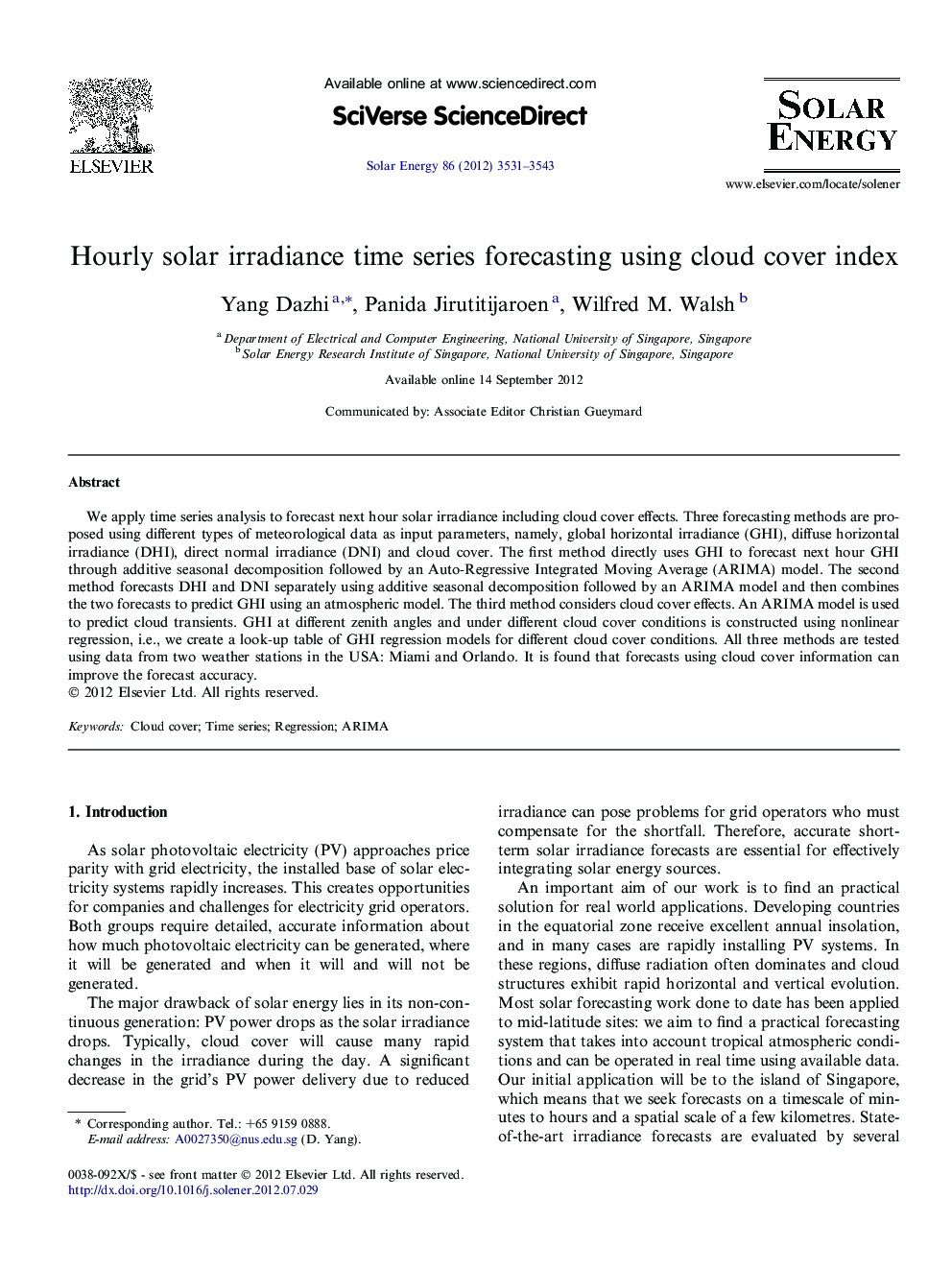| Article ID | Journal | Published Year | Pages | File Type |
|---|---|---|---|---|
| 1550609 | Solar Energy | 2012 | 13 Pages |
We apply time series analysis to forecast next hour solar irradiance including cloud cover effects. Three forecasting methods are proposed using different types of meteorological data as input parameters, namely, global horizontal irradiance (GHI), diffuse horizontal irradiance (DHI), direct normal irradiance (DNI) and cloud cover. The first method directly uses GHI to forecast next hour GHI through additive seasonal decomposition followed by an Auto-Regressive Integrated Moving Average (ARIMA) model. The second method forecasts DHI and DNI separately using additive seasonal decomposition followed by an ARIMA model and then combines the two forecasts to predict GHI using an atmospheric model. The third method considers cloud cover effects. An ARIMA model is used to predict cloud transients. GHI at different zenith angles and under different cloud cover conditions is constructed using nonlinear regression, i.e., we create a look-up table of GHI regression models for different cloud cover conditions. All three methods are tested using data from two weather stations in the USA: Miami and Orlando. It is found that forecasts using cloud cover information can improve the forecast accuracy.
► We propose three models to forecast hourly global solar radiation. ► Forecasts use ARIMA models. ► Only having cloud cover data is sufficient for the forecast. ► Increasing meteorological information will increase forecast accuracy.
